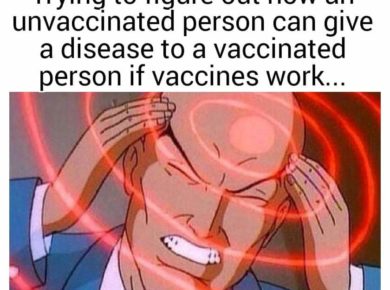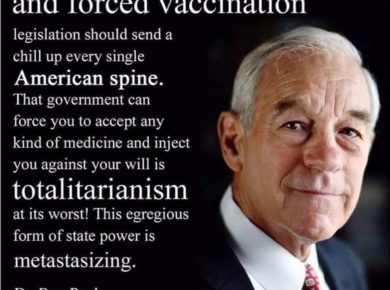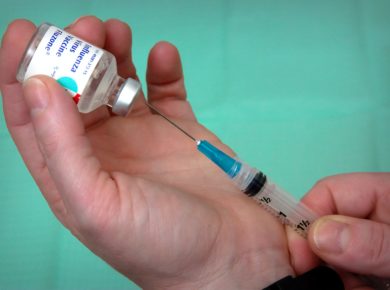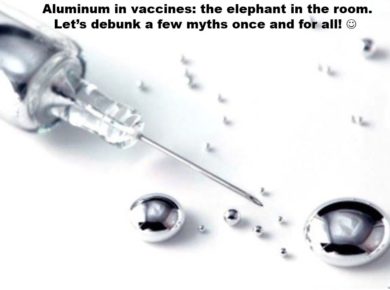I have seen it over and over. Thousands of parents can confirm this, as well.
A child who regresses into autism after the MMR shot.
This vaccine does not contain aluminum or mercury.
We all know that these heavy metals are involved and cause autism.
But how does the MMR vaccine cause autism when they do not contain heavy metals?
New research shows how this happens.
The answer lies in a molecule called monocyte chemoattractant protein (MCP)-1. This molecule is involved in recruiting monocytes to sites of injury and inflammation.
Monocytes are a type of white blood cells. They are the largest type of white blood cells and can differentiate into macrophages and myeloid lineage dendritic cells.
As a part of the vertebrate innate immune system, monocytes also influence the process of adaptive immunity.
Macrophages are a type of white blood cell, of the immune system, that engulfs and digests cellular debris, foreign substances, microbes, cancer cells, and anything else that does not have the type of proteins specific to a healthy body.
The macrophage functions allow the development and production of antibodies that are used to eliminate those foreign substances.
Thus, MCP-1 production increases at the site of injection after a vaccine is given.
Consistent with this, the measles vaccine is associated with a higher level of plasma MCP-1.
MCP-1 production is stimulated by some types of immune activation.
Hence, a vaccine that stimulates MCP-1 may cause autism (e.g., from prior vaccines) to move into the brain. Some infections or toxins induce MCP-1.
Interestingly, aluminum adjuvant induces MCP-1, suggesting that it may stimulate its own transport. So it is a vicious cycle. The MMR increases the inflammatory response through elevated MCP-1. This allows the transport of aluminum to the brain, leading to more MCP-1 production.
It is believed that aluminum from vaccines may remain “dormant” for years until MCP-1 production is stimulated.
The MCP-1 will cause macrophages containing aluminum to mobilize and transport aluminum into the brain and other sensitive tissues like the spleen, the liver, and the lymph nodes. This may explain some of the damage from the MMR vaccine. MMR is given at 15-18 months of age, which is after Al-containing vaccines are given (at 0, 2, 4, and six months).
Therefore, the MMR vaccine may stimulate the movement of aluminum (received from prior vaccines) into the brain.
This may explain how MMR could cause aluminum toxicity, even though it does not contain an aluminum adjuvant.
I have shown that MCP-1 is elevated in the autistic brain and spinal fluid.
This was one of the most significant findings of the 2005 Vargas study, the first to report chronic brain inflammation in autism.
Note that Vargas mentions that MCP-1 causes movement of macrophages/monocytes into the brain.
Vargas states:
“The presence of MCP-1 is of particular interest, because it facilitates the infiltration and accumulation of monocytes and macrophages in inflammatory central nervous system disease.”
AND
“MCP-1, a chemokine involved in innate immune reactions and important mediator for monocyte and T-cell activation and trafficking into areas of tissue injury, appeared to be one of the most relevant proteins found in cytokine protein array studies because it was significantly elevated in both brain tissues and cerebrospinal fluid.”
AND
“The increased expression of MCP-1 has
relevance to the pathogenesis of autism because we believe its elevation in the
brain is linked to microglial activation and perhaps to the recruitment of
monocytes/macrophages to areas of neurodegeneration…”
The Vargas paper is entitled: “Neuroglial activation and neuroinflammation in the brain of patients with autism” published in Ann Neurol. 2005 Jan;57(1):67-81.
A January 2017 paper confirms the finding of elevated MCP-1/CCL2 in autism (in blood serum). Levels in autistics were 182 pg/mL, compared to 142 pg/mL in normal children which is a huge difference!
You can look at this paper which is: “Distinct Cytokine and Chemokine Profiles in Autism Spectrum Disorders” published in Front Immunol. 2017; 8: 11.
MCP-1 is elevated in newborns (24-48 hours after birth) that later become autistic.
The babies with elevated MCP-1 will experience transport of aluminum adjuvant into the brain after vaccination.
So, the fact that MCP-1 is elevated in babies later diagnosed with autism supports a causal link between aluminum adjuvant and autism.
You can find the data in this paper:
“Neonatal cytokines and chemokines and risk of Autism Spectrum Disorder: the Early Markers for Autism (EMA) study: a case-control study” published in J Neuroinflammation. 2014; 11: 113.
A few years ago, Crepeaux et al. published a very interesting paper:
“Non-linear dose-response of aluminum hydroxide adjuvant particles: Selective low dose neurotoxicity” in Exley Toxicology 375 (2017) 48–57.
This study reported that a dosage of 200mcg/Kg aluminum adjuvant (as three doses of 66 mcg/Kg), injected intramuscularly in the leg, caused a 50X increase in brain aluminum content.
Brain aluminum was measured six months after the final injection.
Of course, this result suggests that the aluminum adjuvant persists in the brain long-term.
The aluminum adjuvant injection also caused long term microglial activation (inflammation) in the brain.
To recap, aluminum from early childhood vaccinations stays dormant in the body. The MMR vaccine stimulates an inflammatory response which leads to the accumulation of aluminum in the brain.
Since aluminum is a potent neurotoxin and strongly stimulates brain-injuring inflammation, transport of aluminum adjuvant into the brain is a serious concern for vaccine safety.
After all, the aluminum adjuvant is specifically designed to stimulate inflammation. Inflammation is what makes it effective as an adjuvant.
Brain inflammation causes autism.







